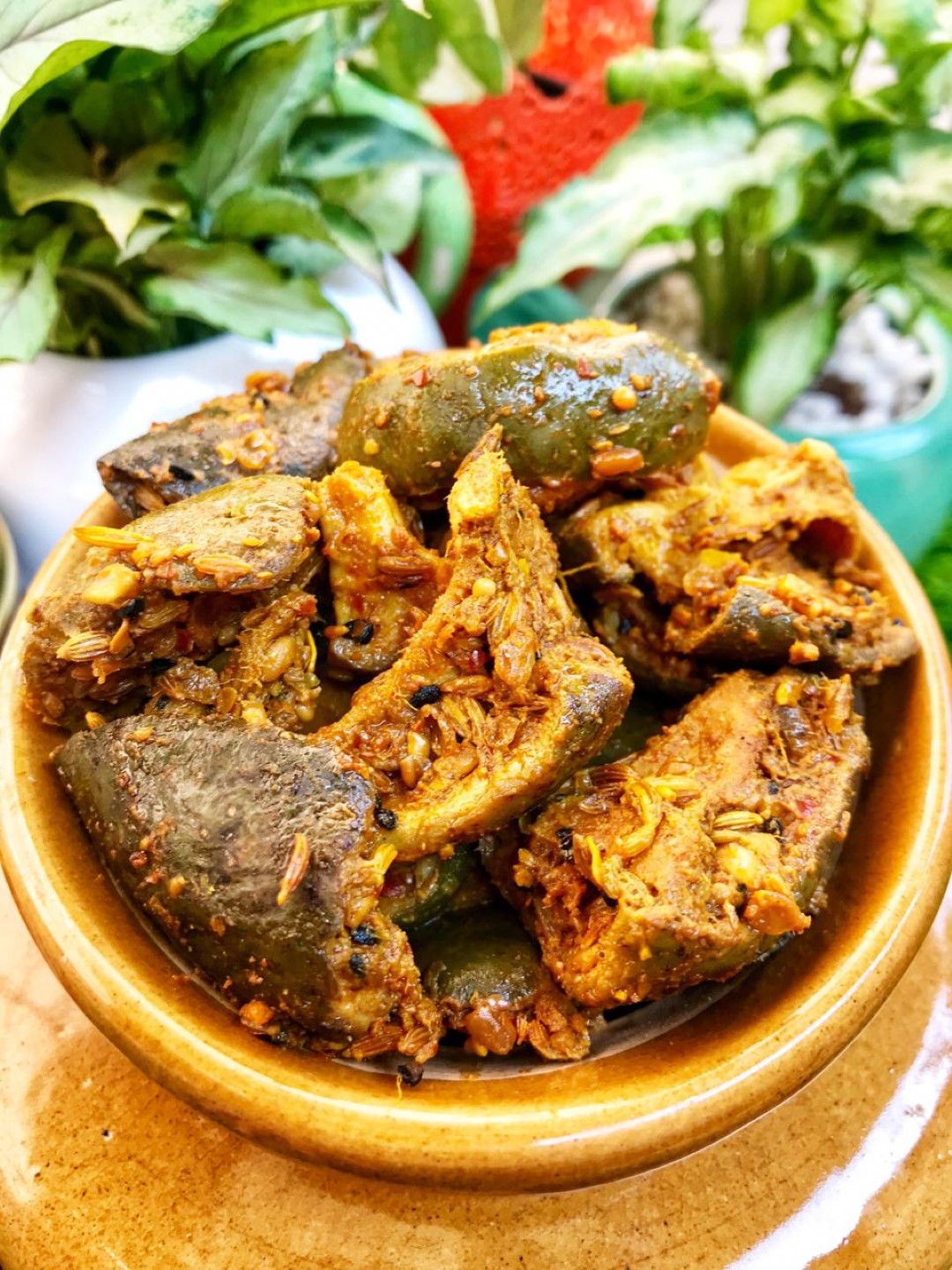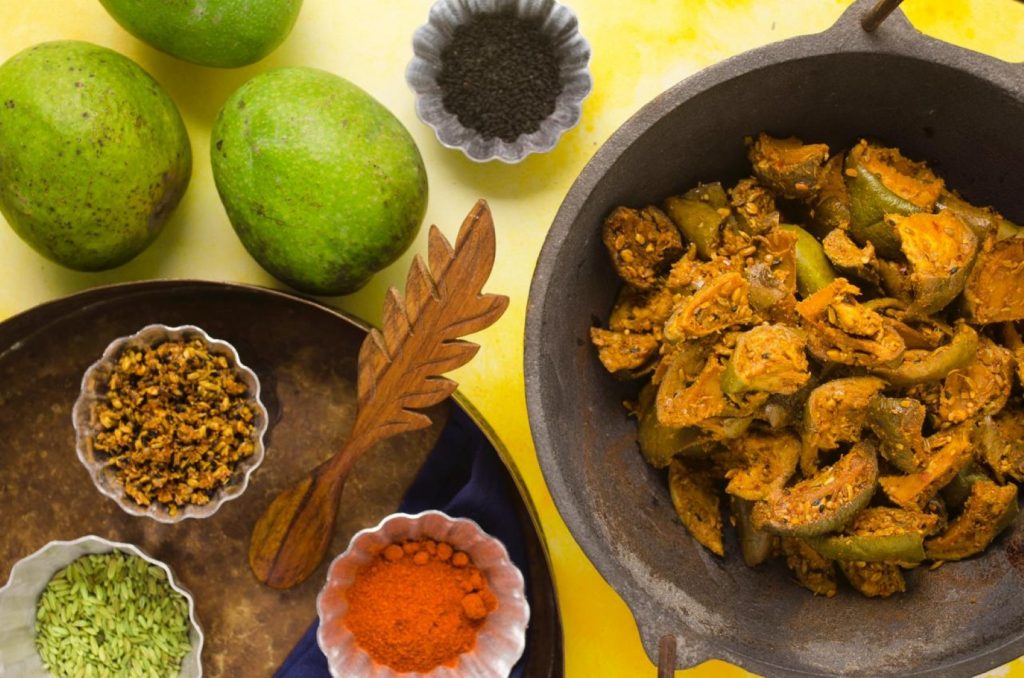
Today, we’re taking a deep dive into the world of Indian pickles, specifically focusing on the tangy and delightful Aam Ka Achar, also known as Indian Mango Pickle. This traditional Indian condiment, with its burst of flavors, is a staple in households across the country. It’s a perfect accompaniment to a variety of meals, adding that extra zing that elevates the dining experience.
Making Aam Ka Achar is a culinary adventure in itself. It’s a process that involves patience, precision, and a passion for flavors. Whether you’re a seasoned cook or a newbie in the kitchen, making your own Aam Ka Achar is a journey worth embarking on.

Before we delve into the world of Aam Ka Achar, we’d like to extend an invitation to you to join our foodie community at Eatlo. It’s a vibrant space where food lovers from all over the world share their recipes, cooking tips, and food experiences. It’s a place to learn, share, and celebrate the love for food.
Now, let’s embark on our Aam Ka Achar journey!
🥭 1. Grandma’s Mango Pickle Recipe by ‘Grandma’s Recipes’: This recipe takes you back to the roots of traditional Indian cooking. It’s a classic take on the Indian mango pickle, using raw mangoes, mustard oil, and a blend of spices like fenugreek seeds, fennel seeds, nigella seeds, and turmeric. The simplicity of this recipe makes it perfect for beginners. The detailed instructions and the use of easily available ingredients make this recipe a great starting point for your Aam Ka Achar journey.
🥭 2. Aam Ka Achar by ‘CookingShooking’: This recipe brings a unique twist to the traditional Aam Ka Achar. The use of jaggery instead of sugar gives the pickle a unique flavor, adding a hint of sweetness that beautifully balances the tanginess of the mangoes. The process involves marinating the mangoes in salt and turmeric, then cooking them with jaggery and spices. This recipe is a testament to the fact that a little experimentation can lead to delightful results.
🥭 3. Mango Pickle Recipe by ‘Punjabi Cooking’: This recipe stands out for its use of a large quantity of mustard oil, which gives the pickle a distinct flavor. The recipe also includes a variety of spices like kalonji, fennel seeds, and red chili powder. The detailed step-by-step instructions make it easy to follow, and the end result is a flavorful pickle that packs a punch.

🥭 4. Aam Ka Achar by ‘Harman Khosa’: This recipe is unique not just for its flavors but also for its presentation. It includes sweet and funny Punjabi dialogues along with the cooking process, making the video enjoyable to watch. The ingredients are similar to other recipes, but the presentation and the humor infused in the video make it a standout.
🥭 5. Aam Ka Achar by ‘Kabita’s Kitchen’: This recipe stands out for its detailed explanation and practical tips on how to store the pickle for a long duration. The recipe uses mustard oil, fenugreek seeds, fennel seeds, and other spices. Kabita’s Kitchen provides a comprehensive guide to making and storing Aam Ka Achar, making it a valuable resource for both beginners and experienced cooks.
Summation: Each of these recipes brings something unique to the table. From the use of jaggery in CookingShooking’s recipe to the large quantity of mustard oil in Punjabi Cooking’s version, there’s a lot to learn and experiment with. The diversity in these recipes reflects the diversity of Indian cuisine itself, where the same dish can have numerous variations, each with its own unique flavor profile.
Our Analysis: From our analysis, we’ve noticed that while the basic ingredients remain the same, each recipe has its own unique touch. This variety is what makes Indian cuisine so diverse and exciting. The use of different spices, the method of preparation, and even the type of mango used can significantly alter the taste of the final product. It’s this diversity and the opportunity to experiment that makes cooking such a rewarding experience.
Tips and Learnings: The key to a great Aam Ka Achar is patience and the right balance of flavors. Here are a few tips we’ve gathered from our analysis:
- Quality of Mangoes: Always use fresh, raw mangoes for the best results. The mangoes should be firm and green, with no soft spots or blemishes.
- Use of Spices: The spices used in the pickle not only add flavor but also act as preservatives. Fenugreek seeds, mustard seeds, and asafoetida are commonly used in most recipes. However, feel free to experiment with other spices as well.
- Sun Drying: Sun drying the mangoes after cutting and salting them is a crucial step. It helps in reducing the moisture content, which in turn increases the shelf life of the pickle.
- Mustard Oil: Mustard oil is another key ingredient in Aam Ka Achar. It acts as a preservative and gives the pickle its unique flavor. Some recipes call for a large quantity of oil, while others use it sparingly. Adjust the quantity based on your preference.
- Patience is Key: Making Aam Ka Achar is not a quick process. It takes time for the flavors to develop and for the pickle to reach its full potential. So, be patient and let the pickle mature before you start using it.
We hope you found this post helpful and are now excited to try making your own Aam Ka Achar. Remember, cooking is all about experimenting and having fun. So, don’t be afraid to tweak these recipes to suit your taste. Happy cooking! 🥭🌶️🥣
And don’t forget to join our foodie community at Eatlo for more exciting food discussions and recipe exchanges.








